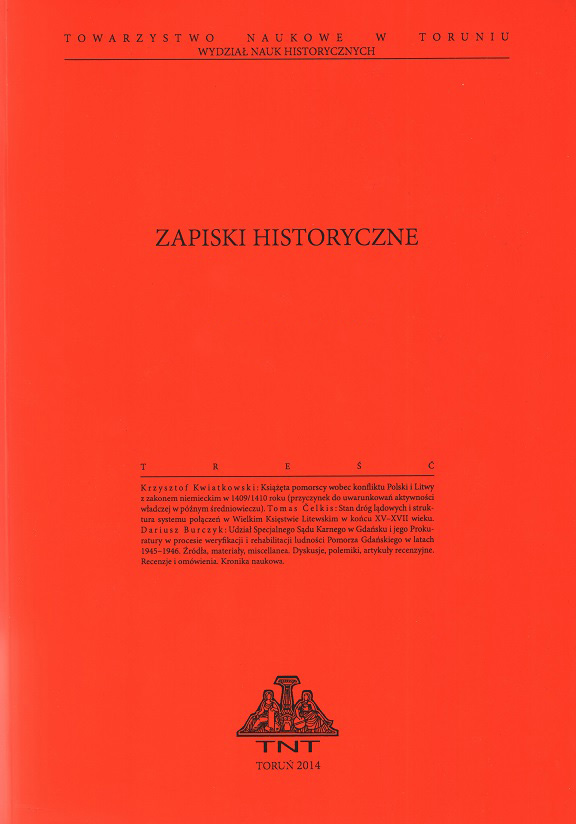Dienerzy w służbie zakonu krzyżackiego w Prusach w drugiej połowie XIV – pierwszej połowie XV wieku
Dieners in the Monastic State of the Teutonic Order in Prussia in the Second Half of the 14th Century – the First Half of the 15th Century
The Group Size, Maintenance, Accommodation
Author(s): Sławomir JóźwiakSubject(s): Economic history, Military history, 13th to 14th Centuries, 15th Century
Published by: Towarzystwo Naukowe w Toruniu
Keywords: the Middle Ages;topography of Teutonic castles;the Monastic State in Prussia;servants of the Teutonic Order
Summary/Abstract: In the late medieval Monastic State of the Teutonic Order in Prussia dieners were people who came from knightly families (not infrequently from beyond the territory of Prussia) and were maintained by Teutonic dignitaries and officials (they were provided with accommodation, food, clothes and pay) in exchange for the diplomatic, military-knightly and courtly service (the participation in military actions, the manning of castles, transporting information, the defence of envoys and guests, the examination of the territory occupied by the enemy, the participation in corteges, etc.). In the first half of the 15th century (the available data refers only to this period of time), every high Teutonic official, commander and Vogt had even a few dozens of dieners at their disposal, except extraordinary situations such as the manning of frontier castles in Klaipėda and Dybów. In the whole territory of the Teutonic State in Prussia there might have been about 450–500 dieners at that time. The source analysis conducted here which concerned the castles in Malbork, Świecie, Elbląg and Brandenburg allow us to state that dieners were provided with the accommodation in the buildings situated in the outer wards of the castles. They were given rooms (chambers) exclusively for their use or individual rooms in infirmaries of dieners/servants. As may be inferred from the relatively numerous sources in the Malbork castle they were accommodated on the ground floor in the southern part of the eastern wing of the first internal ward, in the infirmaries next to the Church of St. Lawrence (the southern wing of the first internal ward). In Konigsberg the solution was quite exceptional. Dieners residing there were allowed to have their residential space within the outer wards of the castle (which cannot be proved), but the infirmary where they resided was situated in the territory of the so called wolnizna [Burgfreihei], in the north of the north-east part of the outer ward.
Journal: Zapiski Historyczne
- Issue Year: 83/2018
- Issue No: 1
- Page Range: 7-37
- Page Count: 31
- Language: Polish

